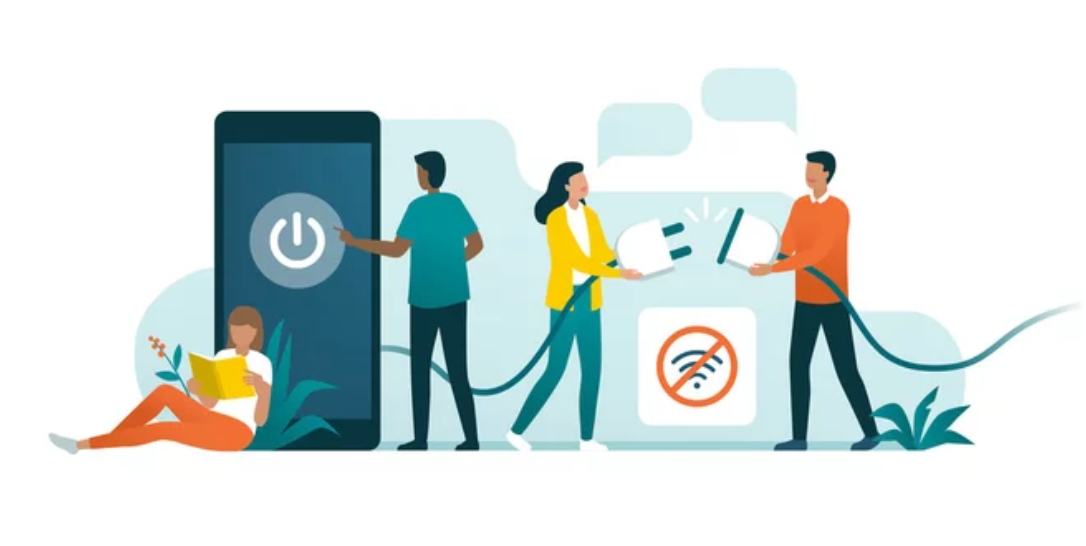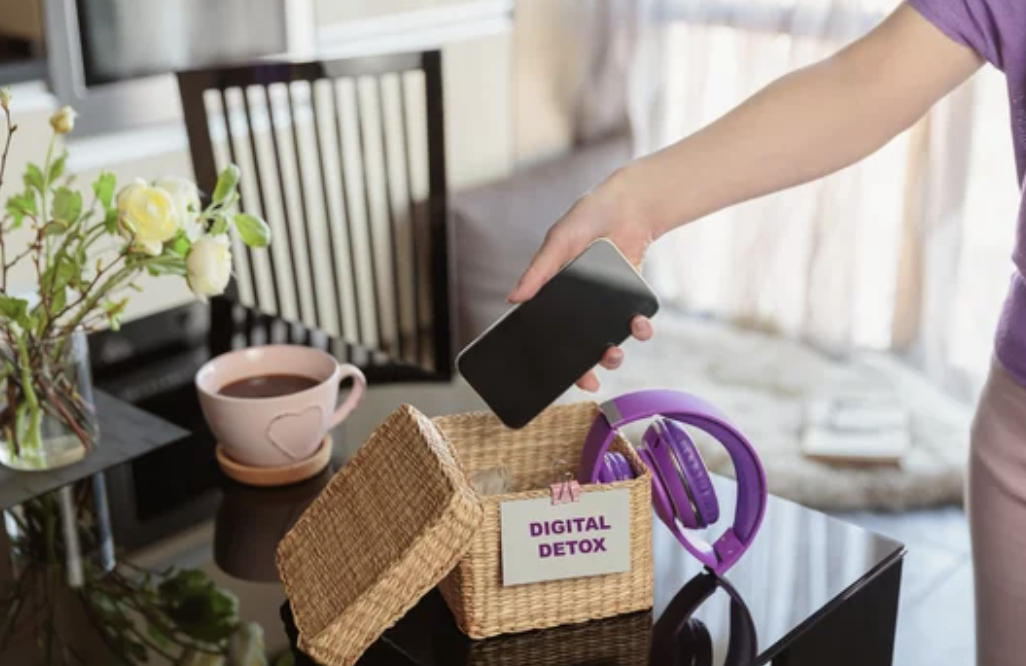Digital Detox: What You Need To Know And How To Do It
Digital detox is becoming an essential practice due to the increasing digital dependency. Here's how you can step away from it and how Maileroo helps you communicate with ease during the detox.

In an age where the glow of phone screens is everywhere and the ding of notifications is ceaseless, the concept of digital detox has surged from a mere idea to an essential practice.
Research reveals that about 61% of phone users professed compulsive tethering to the internet and their digital devices—solid evidence of the digital addiction that grips current society.
This digital dependency was increased during the COVID-19 lockdown, which also compels us to gravitate even more towards our devices for connection, entertainment, and solace.
However, exploring the avenue of digital detoxification promises a pathway towards less stress and more focus, a much needed respite in today’s digitally saturated environment.
In this article, we will go over the symptoms of why you need to do a digital detox, how to do it, the benefits of having one, the apps that you use for detox, and how to communicate with ease while detoxing.
What is a digital detox?
A digital detox refers to a period of time when a person refrains from using tech devices such as smartphones, televisions, computers, tablets, and social media sites.
This kind of “detoxing” from digital devices is often seen as a way to focus on real-life social interactions without any distraction.
By forgoing these digital devices, at least temporarily, people can let go of the hurdles and stressors of being constantly connected in the online world.
How do you know that you need to do a digital detox?
You might be in denial, as you might think you haven’t gotten much into your phone these days. But one might need to differ, as if you encounter these symptoms, then you need the detox.
- Depressed mood: Constant exposure to digital screens and the curated lives of others can lead to feelings of inadequacy and depression.
- Increased mood swings: These mood swings include irritability, frustration, and anger. Short tempers are often a result of the overstimulation from constant notifications and digital demands.
- Loss of sleep: Bright screens and late-night scrolling can disrupt your natural sleep patterns.
- Feeling obligated to respond and consume:Bringing a The pressure to stay up-to-date with the digital world can be a consuming task, both mentally and emotionally.
- You instinctively reach for your phone when it buzzes or rings: This reflex indicates a high level of dependency on smartphone feedback.
- Withdrawal symptoms when offline: Anxiety over the feeling of missing out (FOMO) can indicate an unhealthy attachment to these digital devices.
- Bringing a phone or tablet into the bathroom: If this is not a clear sign, we don’t know what is. This suggests a reluctance or inability to disconnect, even briefly.
- You just can’t put down your phone: Prioritising digital interaction over physical presence can be a big sign of not living in the present and not communicating with loved ones.
- Unhealthy eating habits: The lure of screens can lead to mindless eating and a preference for convenience food over nutritious meals.
- Poor time management: The distraction of digital devices can lead to procrastination and poor allocation of time, affecting productivity and daily responsibilities.
- Work ethic problems: Dependence on digital devices can erode the ability to maintain focus and diligence at work or in studies, undermining professional and academic performance.
So, how do you do a digital detox?
Doing the first few steps in detoxing can be challenging yet necessary.
However, admitting that phones and the digital universe have become central to our daily lives is the first step.
Below is the other practical guide to setting yourself up for a successful digital detox:
Set a goal
Always start by clearly defining what you wish to achieve with your digital detox. This could be as simple as reducing overall screen time or limiting your social media consumption to once a week.
Tell yourself exactly what you want to achieve from the start, no matter what you decide.
Choose a duration
Decide on a manageable time frame for your detox. Start with something achievable; you can always extend this period as you progress.
Inform Your Circle
Communicate your digital boundaries to friends and family. This step is crucial as it helps set expectations and ensures those in your life respect the parameters of your detox.
Tech Modifications
- Downgrade Your Phone: If staying present is challenging, consider switching your smartphone for a basic cell phone that doesn’t support apps.
- Adjust Your Phone Settings: For iPhone users, use Screen Time in your device's settings to limit app usage. You can also schedule downtime, allowing only phone calls or selected apps during this period.
Seek Digital Help
Ironically, certain apps can assist in your digital detox by locking you out of your phone for predetermined periods. Installing these can help maintain your commitment to the detox.
Find Offline Activities
Engage in hobbies or activities that don't involve digital devices. This not only helps distract you from the digital absence but can also enrich your life with productive and satisfying experiences.
Rediscovering hobbies or exploring new interests can be profoundly rewarding during this time.

Benefits of Being Offline
Taking a step back from the digital world can yield surprising and profound benefits.
By intentionally disconnecting, you not only give your mind a break from the constant influx of notifications and information but also open yourself up to a variety of positive experiences:
- Increased Productivity: Without the constant interruptions of notifications and the temptation to scroll through social media, you'll likely find your focus sharpened and your productivity increased.
- Enhanced Connection with Others: Spending less time on digital devices means more opportunities for face-to-face interactions, fostering deeper connections with those around you.
- The Joy of Missing Out (JOMO): In contrast to the fear of missing out (FOMO), being offline can lead you to appreciate the moments you're living right now, enjoying life as it happens without the need for digital validation.
- Reduced Stress Levels: Taking planned breaks from smartphones and other digital devices has been shown in a number of social experiments to significantly lower stress levels, resulting in a calmer and happier state of mind.
- Improved Sleep Quality: Limiting screen time, especially before bed, can enhance your sleep quality. The absence of blue light from screens allows your brain to release melatonin more effectively, helping you relax and drift off to sleep more easily.
- Better Physical Health: Extended use of digital devices can lead to physical discomfort and strain, including eye strain, dry eyes, blurry vision, and headaches. By taking time away from screens, you're also reducing the risk of such ailments and promoting overall physical well-being.

Some Apps to Support Your Digital Detox Journey
You might be wondering why this section is even part of this article. But before you say nah, the technology or apps are still helpful in giving you the detox that you need and here are those:
Offtime
This app acts as a digital version of clocking out from work, allowing you to set aside your digital responsibilities for a designated period.
Offtime lets you enjoy your day without your phone constantly beeping, whether it is for a few hours or just a few minutes.
It even lets you choose which contacts can call you during your digital break, so you can still be reached in an emergency.
Offscreen
If you have ever been curious about how long you really spend on your phone, Offscreen can help.
Not only does this app guess, but it also carefully records your screen time, such as how often you scroll, pick up your phone, and even use it while walking.
Offscreen is the ideal tool for those looking to gain accurate insights into their digital habits and take control of their screen time.
Flipd
Flipd is a digital detox app that encourages productivity and focus. It offers various breaks, including setting time limits for apps and locking phones.
Its "Full Lock" mode locks phones for a set period, and a focus timer helps track productivity. The app also provides guided meditations and calming sounds for relaxation.
Forest
Forest is a digital detox app that encourages users to stay focused and motivated by planting virtual trees while off their phones. If they check their phone before the allocated time, the tree dies.
Users earn coins to plant real trees through the app's partnership with Trees for the Future, promoting screen time limits and a good cause.
Moment
Moment is a popular digital detox app that helps users track screen time, set limits, and create healthy habits. It offers features like "forced breaks" and coaching sessions to help users build a healthier relationship with technology.
Moment is a valuable tool for reducing screen time and promoting a digital detox.
Cleverest
Cleverest is a gamified app that encourages users to limit screen time during digital detox. It offers challenges, competitions, personalised goals, and tracking.
Users can earn points for taking breaks and completing real-world tasks, enhancing engagement and social aspects of the journey.
Cleverest helps users take control of their screen time and embrace a healthier lifestyle.
The Verdict
In a current world where being constantly connected can lead to digital fatigue, it's crucial to find balance and rest.
Mood swings, trouble sleeping, and an unwillingness to unplug are just a few of the symptoms of this digital addiction.
To start a digital detox, you need to set clear goals, let your friends and family know about your plans, change your tech habits, and do things that don't involve much technology.
Such a break from it has many benefits, including higher productivity, better human relationships, and lower stress levels.

